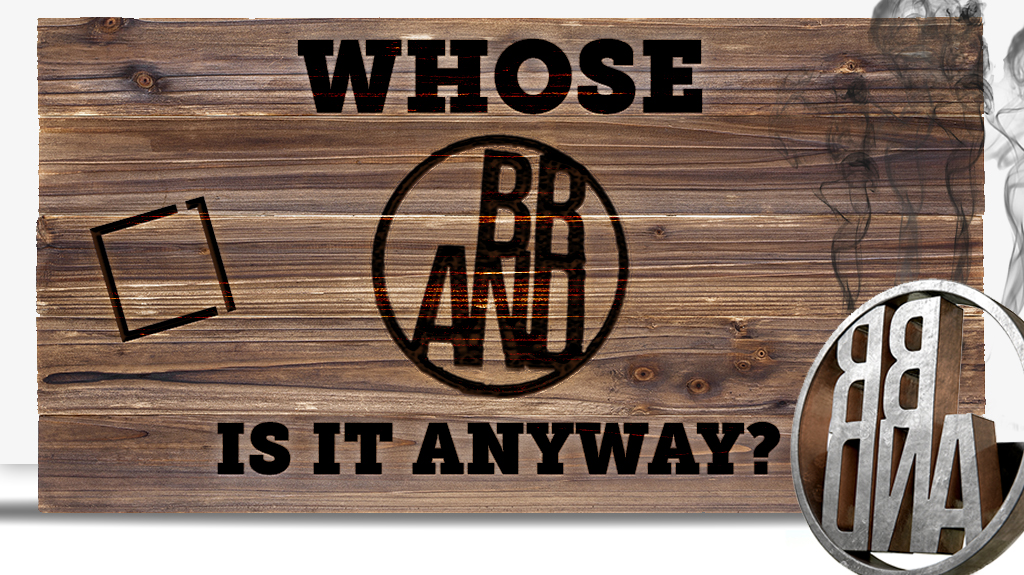Whose Brand is it Anyway?
In its original Norse definition, to “brand” was to make a distinction of ownership by burning items with a unique mark.
The term was later taken up by farmers, who did the very same thing with cattle to ensure they didn’t get mixed up with neighbouring herds.
So the brand was a mark of ownership, and to some, this definition seems to have stuck; many people see the term “brand” as interchangeable with the word “logo”.
Today, a logo is one way that we can distinguish between different companies’ products.
… a brand is so much more than a logo.
Did you know…

… as well as mark of ownership, the Norse origins of “Brand” had creative connotations, as the practice was applied by craftsmen to their products, ie:
“Hey, Eadric… check out my new Sanborn axe!”
But a brand is so much more than a logo. From colour palettes to the way you answer the phone, from your Senior Leadership team to your newest recruit, and every touchpoint with your target audiences – all of it forms part of the brand.
And because of brand’s “ethereal nature”, who actually owns the brand is up for debate…
Company Owners/Senior Stakeholders
Often the first people you’d think of as “owning” the brand would be those who own or run the business. And while it’s often true that the upper echelons of the corporate structure have more of a say in the direction that they’d like to see the brand go, they can’t get it there alone.
Without buy-in from the staff and customers, the brand will be going nowhere – tearing up an existing vision statement and writing a new one won’t magically transform it.
Brands are much bigger than one boardroom full of suits.
Brands are much bigger than one boardroom full of suits; it’s easy to become blinkered to this fact, but it’s hugely important to recognise and act upon it accordingly.
The staff
The front-line of your company are not only living the brand day-in, day-out, but often play a key role in the customer’s interpretation. Consider the impact of either a shiningly positive or infuriatingly negative interaction you may have had with a customer service agent in the past. The sentiment that you’re left – good or bad – is tied to the brand, not the individual.
And it’s not just customer service staff to consider. Anyone who interacts with an external party – whether that’s a direct client, a partner organisation or the cleaners – is in effect the mouthpiece of your brand. And now more than ever, with the rise of social media and the ease of publishing online, these mouthpieces are easily amplified.
Making sure your employees are aligned with the brand and demonstrating its values is imperative for a cohesive brand journey. As a result, ownership of the brand itself sits, in part at least, with the staff.
The customers
You could argue that the exchange of money for goods or services implies some level of ownership of the brand to the end customer. Of course, in reality they’re not buying the living, breathing, untouchable brand, but the branded “thing”, even if by doing so they get that happy feeling of connecting with the brand’s values.
For example, someone may purchase a particular brand of drink having previously bought into the values associated with it. The customer has bought into the brand (emotionally) before buying the end product (literally). Once they’ve finished the drink and thrown the empty bottle into the recycling bin, does the brand ownership continue?
Whether purchasing a product or subscribing to a service, your end customers, that all important audience that you’ve done so much to try and connect with, are the ones with the final say on whether they choose you or your competitor. Their ownership of the brand can be argued along with whether consumer demand shapes the product, or whether companies influence the consumer to drive desire for the product.
… ignoring how your target audience feels about the brand is a big mistake.
In either case, ignoring how your target audience feels about the brand is a big mistake. The growth of social media has empowered consumers to have a voice, even if companies choose not to take part; not having a presence on a social platform doesn’t stop anyone else from talking about you. There are plenty of horror stories out there of brands being damaged, in some cases irreversibly, by negative social publicity online.
This power insists that there is at least some level of brand ownership amongst your customers and prospects. And if your brand can’t evolve with their changing demands – to keep you and your brand relevant to your audience – then you run the risk of getting left in the dust.
So, the answer…
As Brand and Marketing specialists, Square1 takes clients back to the beginning (to Square1, geddit) to help uncover and distil their brand’s essence. But we don’t just make it up, pulling values from thin air. Often, they’re already there, waiting to be uncovered, engagingly identified, creatively translated into marketing assets and strategically communicated to your target audience. Research and analysis forms the core foundation of our work to define the brand, and this can’t be done in isolation of any of these three main groups of brand “owners”; all of them are stakeholders, interacting with and having an impact on the brand.
Only by taking into account the opinions of all these different groups can you gain a true 360 degree view of the brand, its current position and potential to evolve or grow. And only then can you create cohesive, relatable brand stories that can become the cornerstone of comprehensive, aligned marketing strategies and ultimately meet the desired business objectives. It’s our three key steps of consult, create and communicate.
All of us at Square1 are passionate about Brand, so please get in touch if you’d like to have a chat about yours.




